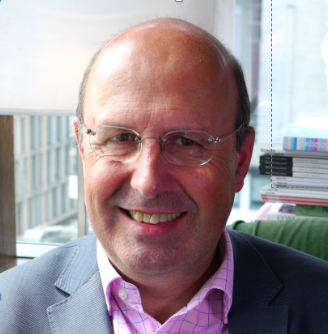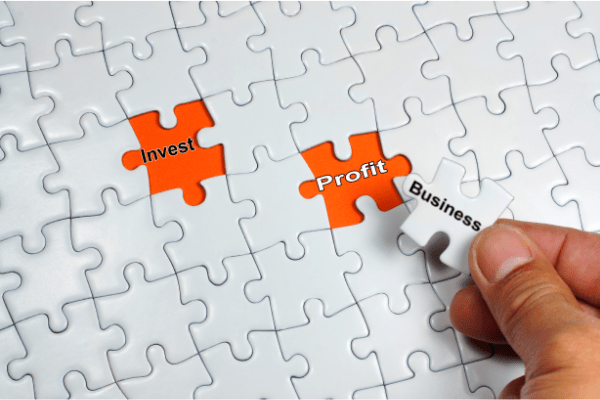You can sign up to our LinkedIn newsletter here.
As I work with people who’ve got through the initial part of getting their Portfolio Executive workstyle started, I often find there is a tension between taking cash out of the business versus investing in their future. I was talking to one of the Portfolio Executives I work with last week, and he explained that he’s now earning more money than he’s ever earned in his life before then, nearly £120,000 in the last 12 months and yet he feels that he’s constantly short of money. For a man, married with one child living in a flat in central London this is not entirely surprising but, still, reflects some concerns I have about how people look at the money that they take out of the business, versus building the future of the business.
It’s not a job, it’s a business
For somebody coming from employment, seeing all this money coming into a bank account of a company they own, can easily feel like it’s money that’s in their personal bank account.
But actually, what you need to do is shift your mindset from being an employee, who, perhaps in the past, has spent all of the money they’ve earned, to being a businessperson who is looking at the balance between investing in their business and drawing income out of their business.
There are three different things that I think are useful to keep in mind as you look at that ever-increasing bank balance in your business account.
Taxes
The first thing is, you will sooner or later, have to pay your taxes so you need to allocate, ideally put into a savings account, the money that represents, either the corporation tax you’re going to have to pay on your profits at the end of the year, or the PAYE money that you’ll have to pay HMRC for the salary you’ve taken out of the business (not forgetting the National Insurance Contributions), or the VAT (due to your higher turnover) you need to set aside every quarter for HMRC.
This is the first pot of money that I’d always put aside, it’s not actually your money. You’re holding it on behalf of the government. When they want it, it’s much easier to pay it on time rather than have to negotiate a delayed payment scheme.
Your insurance policy
The second thing is what I call your insurance policy. I work with lots of charities and in a charity they hold something called a ‘reserve’, which is meant to be the amount of money they would need to successfully wind down the charity and pay everybody they owe, as well as carry themselves through a bad patch. As a rule of thumb, for many smaller charities, this is three months income.
I think for a Portfolio Executive, building up a reserve, a cash balance, of three months income is quite a useful thing to do.
You could take insurance out on illness, or you could use this as a way of self-insuring against unforeseen circumstances that result in your income being diminished. It might be because you’re ill or your family obligations change or you have some bad luck in terms of retaining or attracting new clients. A three month buffer can be very helpful. For my client who had earned £120,000 in his first year as a Portfolio Executive, three months, would represent £30,000.
Investment
The third thing that I think people should set aside, is, what I call, an investment pot. If you take all your dividends out of profits as soon as they become available, then you are not setting money aside for investment. There are three things that I think are well worth investing in for your Portfolio Executive business.
The first thing is to invest in help. Every hour that you spend, not fee earning, doing something that somebody else could do at a lower rate than your fee earning rate you’re flushing potential earnings down the toilet.
I recommend that, almost immediately, you get somebody to do the bookkeeping for you.
You can often get a competent bookkeeper for £10 – £15 an hour. Compare that to your fee earning potential which at £600 a day is £75 per hour or at £1,200 per day, £150 per hour (easily achieved by many of the Portfolio Executive community).
The second thing I recommend you do is get somebody who can look after your marketing activity. The right marketing activity for your business will evolve and develop over time. In the early stages, I recommend the focus should be on building your profile on LinkedIn, developing regular content that you post as LinkedIn posts, and LinkedIn articles. I have assistance from a small team of part-timers who do interviews for articles using Zoom, then transcribe and edit them into polished blogs. They will then use this content to make three to five posts a week on LinkedIn, build new connections, engage with those who read your content and develop relationships using direct messaging. However you get help, it is important to continue to build your presence in the market, develop your reputation, and attract people who will see and appreciate your value.
The other marketing activity that may be useful to invest in early is appointment setting. I would never recommend that you use paid for lead generation services early in your Portfolio Executive business. Getting return on investment is really hard. You can use an app like Calenldy.com but I prefer the personal touch. Once somebody has agreed to have a phone call or meeting, my client co-ordinator chases up to make an appointment, deals with any changes and is a first point of contact if there are any problems. If an appointment involves coordinating multiple people this is a Godsend. It doesn’t need to be very expensive: you can probably get a good person for between £15 -£20 an hour.
Another thing that I think can often be worth paying for is development of a website. I suggest you leave this to after you have been trading for 18-24 months. A website can be a useful asset, and it doesn’t have to cost a fortune. Start with something very simple which is primarily a single page introducing your offer. You can then have an additional page where there are regular posts plus a ‘Contact Us’ page. You can get a well-designed site for between £1,000 -£3,000.
The final consideration as your presence grows and your confidence grows, is to look at how you can develop your presence as a speaker and as an expert. This can be a powerful way of raising awareness of your offer and increasing your rates. Speaking in person has a stronger impact than yet another webinar and getting a 30-minute keynote honed is really powerful. Once you have a 30-minute keynote, you can also easily extend it to an hour. Find opportunities to get in front of potential clients – professional services firms, chambers of commerce and local business hubs are always looking for speakers. Consider joining your local chapter of the Professional Speakers Association or Toastmasters, to develop your skills.
The other thing is to do podcasting. There’s a whole range of podcasting opportunities available. Get some assistance to edit those videos and to build that regular rhythm where they’re posted regularly, whether it’s a video podcast or an audio podcast, podcasting is an increasingly popular medium.
Conclusion
If you choose not to invest in your Portfolio Executive future, the risk you face is that you will not be able to continually enhance your fee rates and the quality of clients that you engage with. With the right kind of investment in marketing, done step by step, you should be able to move your fee rates up so that if you started as low as £500 a day, you can move up, over time, to achieve £1200 – £1500 a day.
Cash v.s investment is critical for a Portfolio Executive business. Recognise that to continually grow your credibility as a Portfolio Executive and to ensure the future health of your business, set aside some of the money that is surplus to your immediate personal requirements, to invest in the development of your business.

Charles McLachlan is the founder of FuturePerfect and on a mission to transform the future of work and business. The Portfolio Executive programme is a new initiative to help executives build a sustainable and impactful second-half-career. Creating an alternative future takes imagination, design, organisation and many other thinking skills. Charles is happy to lend them to you.
